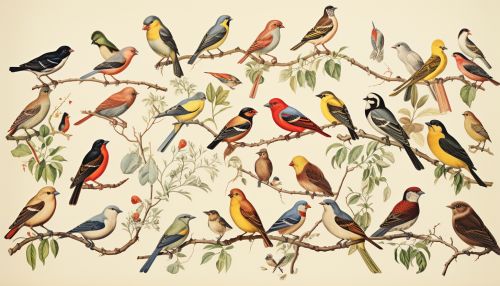Darwinism
Overview
Darwinism is a theory of biological evolution developed by the English naturalist Charles Darwin (1809–1882) and others, stating that all species of organisms arise and develop through the natural selection of small, inherited variations that increase the individual's ability to compete, survive, and reproduce. Also known as Darwinian theory, it originally included the broad concepts of transmutation of species or of evolution which gained general scientific acceptance after Darwin published On the Origin of Species in 1859, including concepts which predated Darwin's theories, but subsequently referred to specific concepts of natural selection, the Weismann barrier, or the central dogma of molecular biology.


Historical Context
Darwin's early interest in nature led him to neglect his medical education at the University of Edinburgh; instead, he helped to investigate marine invertebrates. Studies at the University of Cambridge encouraged his passion for natural science. His five-year voyage on HMS Beagle established him as an eminent geologist whose observations and theories supported Charles Lyell's uniformitarian ideas, and publication of his journal of the voyage made him famous as a popular author.
Darwin's Theory
Darwin's theory of evolution is based on key facts and the inferences drawn from them, which biologist Ernst Mayr summarised as follows:
- Every species is fertile enough that if all offspring survived to reproduce, the population would grow.
- Despite periodic fluctuations, populations remain roughly the same size.
- Resources such as food are limited and are relatively stable over time.
- A struggle for survival ensues.
- Individuals in a population vary significantly from one another.
- Much of this variation is inheritable.
- Individuals less suited to the environment are less likely to survive and less likely to reproduce; individuals more suited to the environment are more likely to survive and more likely to reproduce and leave their inheritable traits to future generations, which produces the process of natural selection.
- This slowly effected process results in populations changing to adapt to their environments, and ultimately, these variations accumulate over time to form new species.
Natural Selection
In Darwinian terms the process of natural selection is the mechanism of evolution. Organisms that are more adapted to their environment are more likely to survive and pass on the genes that aided their success. This process causes species to change and diverge over time. This divergence may lead to speciation, the formation of a distinct species.
Reception and Impact
The publication of Darwin's theory brought into the open Charles Darwin's theory of evolution through natural selection, the culmination of more than twenty years of work. Thoughts on such topics had been published before, but not with the same large-scale, evidence-based, methodical approach that convinced most of the scientific community. Various evolutionary ideas had already been proposed to explain new findings in biology. There was growing support for such ideas among dissident anatomists and the general public, but during the first half of the 19th century the English scientific establishment was dominated by a small group of individuals who shared common, traditional ideas.
Modern Darwinism
Modern Darwinism combines Darwin's ideas of natural selection with Mendelian genetics, forming the basis of the modern evolutionary synthesis. This synthesis maintains that evolution occurs through changes in the frequency of alleles in a population over time, leading to adaptation and speciation.
